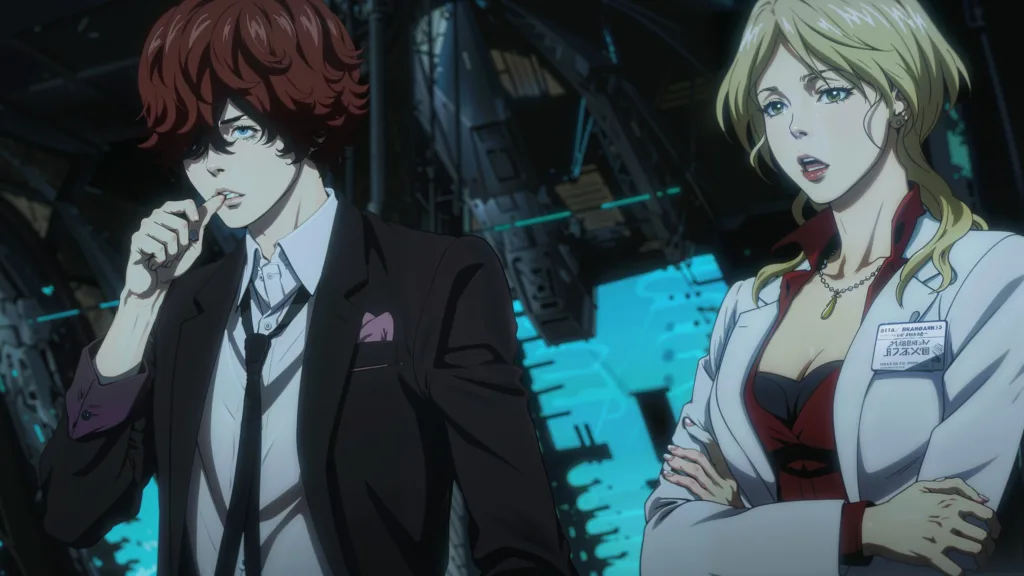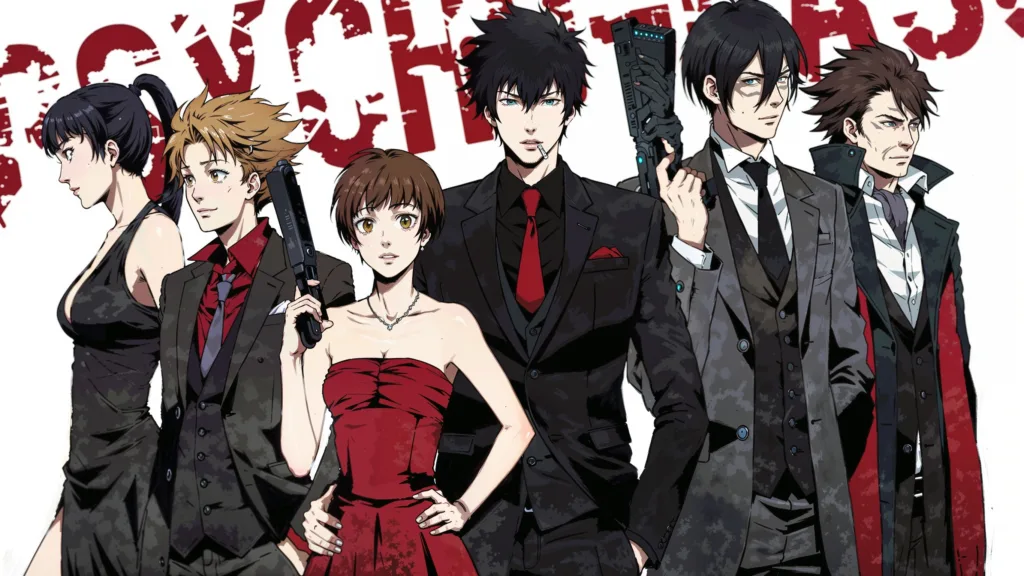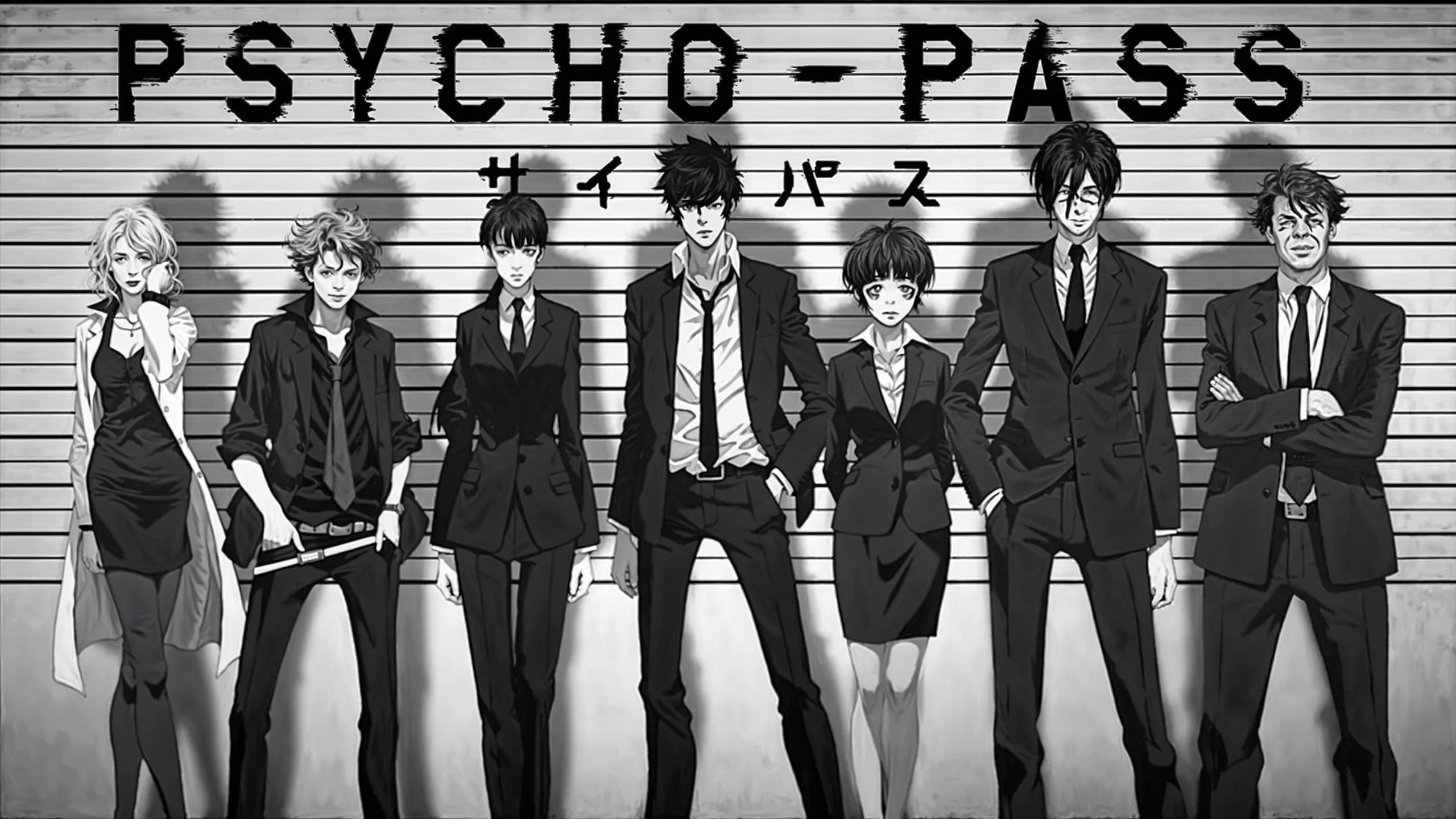Introduction
In the neon-lit streets of a future Tokyo, where mental states are quantified and justice is automated, “Psycho Pass 3” beckons us into a world of moral ambiguity, hidden agendas, and fractured psyches. As the third installment in the acclaimed anime franchise, this season continues to dissect the dark implications of the Sibyl System—a powerful AI that monitors citizens’ psychological states and determines their criminal potential.
The Premise
Imagine a society where your mental well-being is quantified by a hue—a Psycho Pass. If your hue exceeds a certain threshold, you become a target for law enforcement. Inspectors wield dominators—AI weapons that assess and execute judgment. Enforcers, those with murky hues, assist in apprehending criminals.
Meet Inspector Arata Shindo
Enter Inspector Arata Shindo, our enigmatic protagonist. His calm demeanor hides a sharp mind, and his unconventional methods clash with the rigid system. Arata’s skepticism toward the Sibyl System sets him apart. As he investigates mind-bending crimes, he uncovers a web of conspiracies, betrayals, and hidden motives.
Plot Summary Psycho Pass 3

In the near-future city of Tokyo, society is governed by the Sibyl System—an advanced AI that assesses individuals’ mental states and determines their criminal tendencies. The system assigns a “Psycho Pass” to each citizen, indicating their likelihood of committing crimes. If your Psycho-Pass exceeds a certain threshold, you become a target for law enforcement.
Enter Inspector Arata Shindo, a newcomer to the Public Safety Bureau’s Criminal Investigation Division. Arata’s unconventional methods and sharp intellect set him apart from his colleagues. His partnership with enforcer Kei Mikhail Ignatov—a returning character—adds complexity to their investigations.
As Arata delves into a series of disturbing cases, he uncovers a web of conspiracies and hidden agendas. The enigmatic Bifrost organization emerges as a formidable adversary, challenging the Sibyl System’s authority. Arata grapples with questions of justice, morality, and the true nature of freedom.
The stakes escalate as Arata confronts mind-bending crimes, each pushing the boundaries of the system. The line between law enforcement and oppression blurs, and the dominators—the AI weapons used by inspectors—become instruments of judgment.
In this dystopian thriller, Arata must navigate a world where mental stability is quantified, and the pursuit of truth leads to dark revelations. As the Sibyl System’s flaws come to light, Arata faces a choice: uphold the system or challenge its very foundations.
“Psycho Pass 3” weaves a gripping narrative of psychological suspense, cyberpunk aesthetics, and ethical dilemmas. Brace yourself—the shadows hide more than criminals; they conceal the secrets of a fractured society.
Character Analysis
Arata Shindo
Arata Shindo
Inspector Arata Shindo is the beating heart of “Psycho Pass 3.” His arrival at the Public Safety Bureau’s Criminal Investigation Division injects fresh energy into the series. Here’s a closer look at this intriguing character:
- Calm Exterior, Sharp Mind:
- Arata’s demeanor is deceptively tranquil. He rarely loses his cool, even in the face of gruesome crime scenes or bureaucratic red tape.
- His analytical mind dissects cases methodically, connecting dots that others miss. His ability to see patterns in chaos sets him apart.
- Unconventional Methods:
- Arata doesn’t play by the rules. He questions authority, bends protocols, and follows his instincts.
- His unorthodox approach clashes with the rigid structure of the Sibyl System. He’s not afraid to challenge its judgments.
- Complex Relationships:
- Arata’s partnership with enforcer Kei Mikhail Ignatov adds layers to the narrative. Their interactions reveal contrasting ideologies.
- Kei’s loyalty to the system versus Arata’s skepticism creates tension. Their dynamic oscillates between trust and suspicion.
- Personal Struggles:
- Arata carries emotional baggage from his past. His backstory unfolds gradually, hinting at trauma and loss.
- His commitment to justice is unwavering, but he grapples with the ethical implications of the Sibyl System.
- The Bifrost Connection:
- As Arata investigates the Bifrost organization, he uncovers unsettling truths. The enigma surrounding Bifrost fuels his determination.
- His pursuit of justice becomes entangled with personal vendettas and hidden agendas.
Kei Mikhail Ignatov
Kei Mikhail Ignatov
Enforcer Kei Mikhail Ignatov, a returning character, stands in stark contrast to Arata. Here’s what defines Kei:
- Loyalty to the System:
- Kei is a staunch believer in the Sibyl System. He adheres to its judgments without hesitation.
- His unwavering loyalty stems from a desire for stability and order, even if it means sacrificing individual freedoms.
- Internal Conflict:
- Despite his loyalty, Kei grapples with doubts. He witnesses the flaws in the system—the false positives, the injustices.
- His struggle lies in reconciling his duty as an enforcer with his growing unease about the system’s infallibility.
- Arata’s Influence:
- Arata’s presence challenges Kei. Their ideological clashes force Kei to question his beliefs.
- Their partnership is a tug-of-war between duty and curiosity. Kei wonders if there’s more to justice than mere calculations.
- Emotional Resilience:
- Kei conceals his emotions well. His stoicism masks inner turmoil.
- His loyalty to the system acts as both armor and vulnerability.
In the interplay between Arata and Kei, “Psycho Pass 3” explores the shades of gray within its dystopian world. These characters embody the show’s central conflict: the clash between order and individual agency.
Themes and World-Building Psycho Pass 3

1. Immigration and Identity
In the futuristic Tokyo of “Psycho Pass 3,” the Sibyl System’s influence extends beyond crime detection. It also shapes immigration policies. Here’s how this theme unfolds:
- Immigrants as Vulnerable Targets:
- The system assesses immigrants’ Psycho Pass levels, often labeling them as potential threats due to cultural differences or economic struggles.
- Bifrost exploits this vulnerability, manipulating immigrants into criminal activities.
- Identity Struggles:
- Immigrants grapple with their dual identities—belonging to their home country and adapting to a new one.
- The Sibyl System’s judgment affects their sense of self-worth and belonging.
2. Justice and Freedom
- Sibyl’s Definition of Justice:
- The Sibyl System’s algorithmic approach to justice raises ethical questions. Is justice merely a calculation of mental stability?
- Arata Shindo challenges this notion, seeking justice beyond the confines of the system.
- Freedom vs. Control:
- The balance between individual freedom and societal control is precarious.
- The dominators, wielded by inspectors, symbolize this struggle—they enforce order but limit personal agency.
3. World-Building of Psycho Pass 3
- The Sibyl System:
- The heart of the dystopian world, the Sibyl System governs every aspect of life.
- Its omnipresence—monitoring thoughts, emotions, and intentions—creates an eerie atmosphere.
- Technological Landscape:
- Neon-lit streets, holographic billboards, and cybernetic enhancements define the cityscape.
- The animation captures the fusion of advanced technology and urban decay.
- Bifrost and the Underworld:
- Bifrost, a shadowy organization, challenges the system’s authority.
- Their hidden networks, encrypted messages, and clandestine meetings add layers to the world.
“Psycho Pass 3” invites viewers to question the price of order, the cost of control, and the blurred line between justice and oppression. As the characters navigate this intricate web, the world-building amplifies the tension, making Tokyo a character in its own right.
Animation and Soundtrack

1. Animation Quality and Aesthetics Psycho Pass 3
- Cyberpunk Aesthetics:
- The animation captures the gritty, futuristic vibe of Tokyo. Neon-lit streets, towering skyscrapers, and bustling crowds create an immersive cyberpunk atmosphere.
- The cityscape pulsates with life, emphasizing the contrast between technological marvels and urban decay.
- Visceral Action Sequences:
- When dominators are drawn, the animation shifts gears. These AI weapons come alive, their glowing blue lights contrasting with the dark surroundings.
- Action scenes—whether shootouts or hand-to-hand combat—are visceral and impactful.
- Character Designs:
- The character designs remain consistent with the franchise. Inspectors, enforcers, and civilians each have distinct looks.
- Arata Shindo’s calm demeanor is reflected in his composed movements, while Kei Mikhail Ignatov’s stoicism is evident in his posture.
2. Haunting Soundtrack
- Opening Theme (“Q-vism”):
- The haunting opening theme sets the tone for the season. Its electronic beats and ethereal vocals draw viewers into the dystopian world.
- The visuals accompanying the opening sequence—quick cuts, fragmented images—mirror the fractured society.
- Ending Theme (“Bullet”):
- The ending theme, “Bullet,” contrasts the opening. It’s melancholic, hinting at hidden pain and unresolved mysteries.
- The slow tempo and haunting melody linger after each episode, leaving viewers with a sense of unease.
- Background Score:
- The background music enhances suspense and tension. Whether during investigations or confrontations, the score amplifies emotions.
- Synthesizers, strings, and electronic elements blend seamlessly, creating an eerie ambiance.
“Psycho Pass 3” delivers a visual and auditory experience that immerses viewers in its dystopian universe. Whether you’re drawn to the neon-lit streets or haunted by the soundtrack, the animation and sound design contribute significantly to the show’s impact.
Comparison to Previous Seasons Psycho Pass 3
Strengths of “Psycho Pass 3”
- Intricate Plotting:
- While Season 1 had the iconic antagonist Makishima, “Psycho Pass 3” compensates with a web of conspiracies and hidden motives.
- The plot weaves together multiple threads, challenging viewers to connect the dots.
- Character Depth:
- Arata Shindo, the new protagonist, undergoes significant development. His skepticism toward the Sibyl System adds layers to the narrative.
- Kei Mikhail Ignatov’s internal conflict—loyalty versus doubt—adds complexity to the character dynamics.
- Themes and Ethical Dilemmas:
- “Psycho Pass 3” delves deeper into themes of justice, control, and individual agency.
- The ethical implications of the Sibyl System resonate with viewers who seek thought-provoking content.
Challenges and Controversies Psycho Pass 3
- Lack of Iconic Antagonist:
- Makishima’s absence is felt. Bifrost, while intriguing, doesn’t quite match the intensity of Season 1.
- Some fans miss the cat-and-mouse game that defined the earlier seasons.
- Pacing Issues:
- Certain episodes suffer from pacing problems. The plot occasionally meanders, affecting the overall flow.
- Balancing intricate plotting with viewer engagement remains a challenge.
- Complexity for Casual Viewers:
- “Psycho Pass 3” demands attention. Layers of conspiracy and philosophical debates may overwhelm casual viewers.
- The show assumes familiarity with the franchise, which could be a barrier for newcomers.
In summary, “Psycho Pass 3” builds upon its legacy while introducing fresh elements. Whether it lives up to the franchise’s reputation depends on individual preferences. Fans of psychological thrillers and cyberpunk aesthetics will find much to appreciate.
Audience Reception
Reviews and fan reactions to “Psycho Pass 3” have been diverse, reflecting the complexity of the series. Here’s a summary of the reception:
- Positive Aspects:
- Mature Themes: Viewers appreciate the show’s exploration of morality, identity, and societal control. The themes resonate with fans who seek thought-provoking content.
- Character Development: Arata Shindo’s character arc receives praise. His growth from a skeptic to a crusader for justice adds depth to the narrative.
- World-Building: The cyberpunk Tokyo, with its neon-lit streets and technological marvels, captivates audiences.
- Mixed Reviews:
- Lack of Iconic Antagonist: Some fans miss the intense cat-and-mouse game with Makishima from Season 1. Bifrost, while intriguing, doesn’t quite fill that void.
- Pacing: The plot occasionally meanders, leading to pacing issues. Some viewers find certain episodes slower than others.
- Complexity: The intricate plot can be both a strength and a challenge. Casual viewers might struggle to keep up with the layers of conspiracy.
- Controversies:
- Bifrost’s Motivations: The organization’s goals remain shrouded in mystery. Some viewers find this frustrating, while others appreciate the suspense.
- Ethical Dilemmas: The Sibyl System’s judgment sparks debates. Is it truly just? Does it sacrifice individual rights for societal stability?
In the end, “Psycho Pass 3” sparks discussions—a testament to its impact. Whether you’re a die-hard fan or a newcomer, the series invites you to question authority, explore the human psyche, and ponder the price of order in a fractured world.
Conclusion
“Psycho Pass 3” invites us to peer into the abyss of a fractured society, where justice is quantified, and individual agency hangs in the balance. As we bid farewell to the neon-lit streets of futuristic Tokyo, here are our parting thoughts:

- Legacy and Evolution:
- “Psycho Pass 3” builds upon the legacy of its predecessors. It doesn’t shy away from complexity or philosophical debates.
- The evolution lies in its intricate plotting, character depth, and willingness to explore new themes.
- Arata Shindo’s Journey:
- Arata’s skepticism toward the Sibyl System mirrors our own doubts about authority and control.
- His growth—from a curious newcomer to a crusader for justice—anchors the narrative.
- Unanswered Questions:
- Bifrost remains an enigma. Their motivations and endgame linger, leaving room for speculation.
- The Sibyl System’s flaws persist, haunting our thoughts long after the credits roll.
- The City as a Character:
- Tokyo, with its cybernetic enhancements and hidden secrets, becomes a character in its own right.
- Its neon glow conceals both beauty and decay, much like the human psyche.
In the end, “Psycho Pass 3” challenges us to question our own Psycho Pass—to measure our mental states, our convictions, and our willingness to defy the system. As the dominators hum in the background, we’re left pondering: What price are we willing to pay for order?
So, dear viewer, whether you’re an inspector, an enforcer, or an observer, remember this: The dominator’s judgment awaits. Brace yourself—the truth lies in the hue of your soul.
If you like this article then make sure to follow us on instagram!





